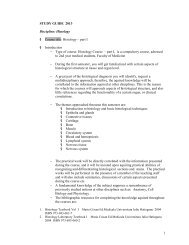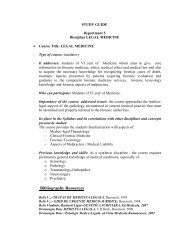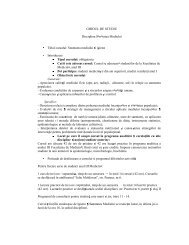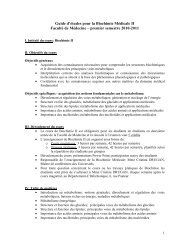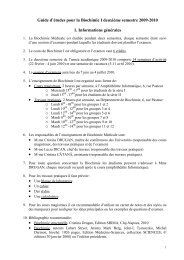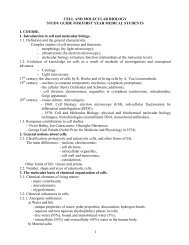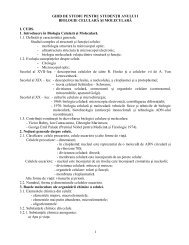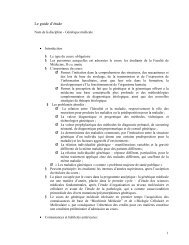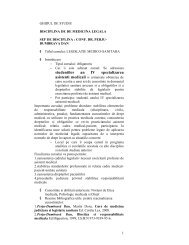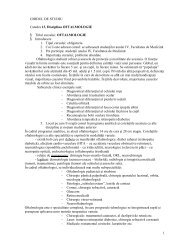Study Guide RADIOLOGY - UMF
Study Guide RADIOLOGY - UMF
Study Guide RADIOLOGY - UMF
You also want an ePaper? Increase the reach of your titles
YUMPU automatically turns print PDFs into web optimized ePapers that Google loves.
<strong>Study</strong> <strong>Guide</strong> – Radiology – Faculty of Medicine - IV th Year 30TOPIC 12. RETROPERITONEUM AND PELVISComplex anatomy of the retroperitoneal and pelvic spaces includes elements of the digestive tract,urinary tract, vascular and nervous systems, genital apparatus and glandular system, thus explainingthe extensive pathology. Imaging diagnostic techniques will be chosen according to the pathologicalentity and complexity of disease and are represented by: classic X-ray, ultrasound examinations,computer tomography and magnetic resonance.The student should know:• Descriptive and sectional anatomy of the retroperitoneum;• Descriptive and sectional anatomy of the pelvis;• Basic physiology: digestive tract, urinary and vascular systems;• Pathology of the organs in these anatomical regions;• Principles of radiological image formation;• Physics and operating principles of imaging techniques;Course Content:A. The Retroperitoneum• Anatomical refresher of retroperitoneumo Contento Demarcationo Anatomical division• Imaging techniques used to investigate the retroperitoneumo Diagnostic principleso Imaging anatomy: ultrasound, CT, RM.• Retroperitoneal pathology to be presented:o Disease of adrenal glandso Lymph node pathologyo Collections of retroperitoneal space• The Adrenalso Anatomical refreshero Imaging anatomyo Nontumoral disease• Diffuse hyperplasia,• Gland calcification secondary to bleeding, cysts, tuberculosis.• Cysts: posthaemorrhagic, lymphangioma• Haemorrhageo Tumors• Benign: adenoma, myelolypoma, pheochromocytoma• Malignancy• Primary: carcinoma, neuroblastoma• Secondaryo Algorithm for imaging assessment• Lymph nodeso Node groupso Imaging anatomy: appearance and normal sizeo Imaging semiology of lymph node diseaseo Pathological node involvement:• Infectious• Autoimmune• Tumoral• Fluid collectionso Imaging appearance



